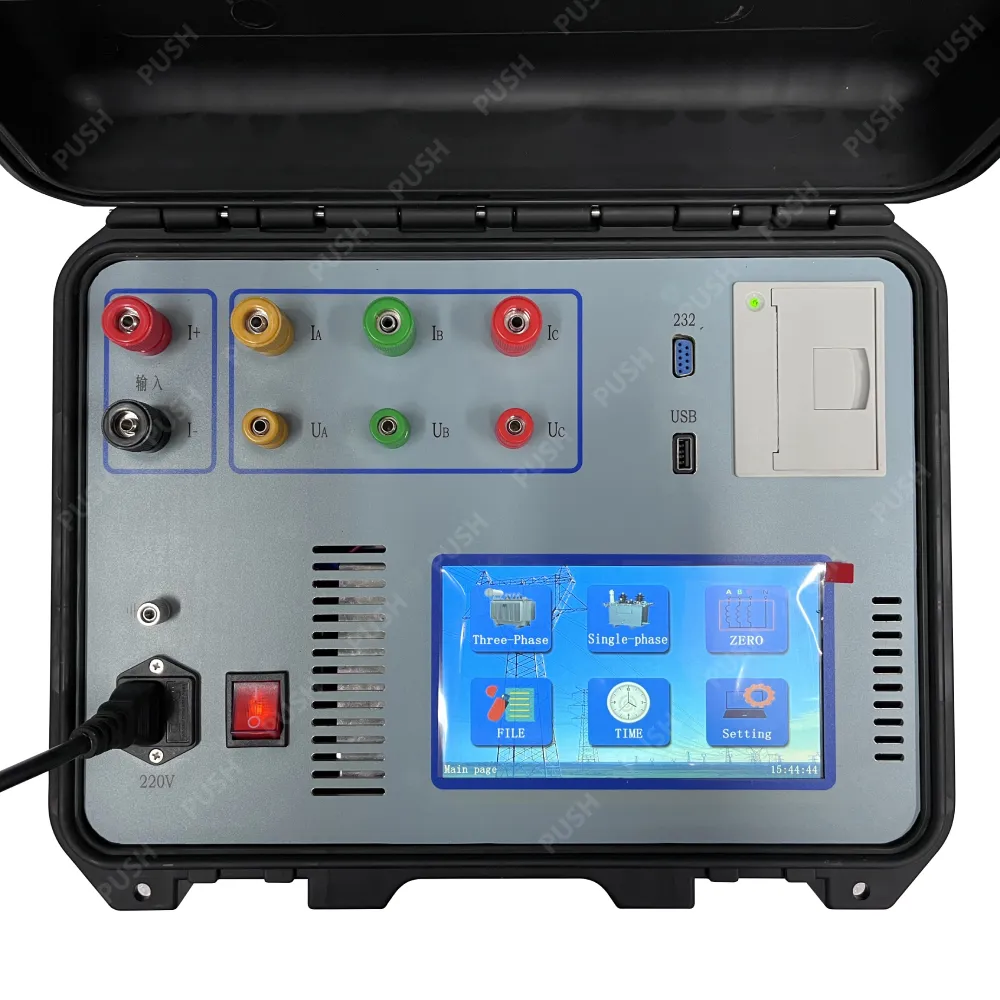 English
English


Assessing the Winding Resistance of Transformers for Improved Performance and Reliability
Measurement of Winding Resistance in Transformers
Transformers are crucial components in electrical engineering, serving as vital links in power distribution systems. They are designed to transfer electrical energy between circuits through electromagnetic induction. One of the key parameters that ensure their efficient performance is the winding resistance. Accurate measurement of winding resistance is essential for assessing the health and performance of transformers.
What is Winding Resistance?
Winding resistance is the resistance offered by the transformer windings to the flow of electric current. It is primarily influenced by the material of the winding conductors (copper or aluminum), the cross-sectional area of the conductors, their length, and temperature conditions. High winding resistance can indicate problems such as loose connections, poor conductivity due to oxidation, or damage to the winding insulation. Consequently, monitoring winding resistance is crucial for the preventive maintenance of transformers.
Importance of Measuring Winding Resistance
Measuring winding resistance serves several essential functions
1. Condition Monitoring Regular measurement helps in identifying any increases in resistance that may indicate potential failures or deteriorating insulation. This can lead to proactive maintenance actions, preventing unexpected transformer outages.
2. Performance Evaluation Accurate resistance measurements contribute to the evaluation of overall transformer efficiency. Excessive winding resistance can increase losses, reduce operational efficiency, and lead to overheating.
3. Load Testing Alignment Winding resistance measurements are necessary for load testing transformers and ensuring they are correctly aligned with design specifications.
4. Safety Assurance By monitoring winding resistance, utilities can avoid conditions that may lead to hazardous failures, ensuring the safety of both personnel and equipment.
Methods of Measuring Winding Resistance
There are various methods used to measure the winding resistance of transformers, each of which comes with its advantages and disadvantages. The most common methods include
measurement of winding resistance of transformer

1. Four-Wire Ohm Measurement This method utilizes four leads to measure resistance, involving two leads for current and two for voltage measurements. The advantage of this technique is that it minimizes the errors due to lead resistance, providing a more accurate reading.
2. Wheatstone Bridge This traditional method involves balancing the bridge circuit to measure resistance accurately. It is highly sensitive and can be used effectively for small resistance values.
3. Digital Micro-Ohmmeters These modern devices are designed for direct measurement of low resistance and are favored for their ease of use and accuracy. Many models come equipped with features such as data logging and temperature compensation.
4. Temperature Corrections Since resistance changes with temperature, it is essential to perform temperature corrections during measurements. Resistance increases with temperature, so it's critical to note the winding temperature at the time of measurement and apply correction factors accordingly.
Best Practices for Performing Measurements
When measuring winding resistance, several best practices should be followed to ensure accurate results
- Conduct Measurements at Ambient Temperature If possible, measure the winding resistance at a consistent ambient temperature or correct for temperature variations.
- Ensure Proper Equipment Calibration Use well-calibrated equipment to guarantee the reliability of measurements.
- Perform Regular Checks Implement a routine measurement schedule to monitor the condition of transformer windings over time.
- Document Findings Keep detailed records of all measurements, including environmental conditions, for trend analysis and future reference.
Conclusion
The measurement of winding resistance is a critical aspect of transformer maintenance and operation. By employing effective measurement techniques and adhering to best practices, electrical engineers can ensure the reliability and efficiency of transformers. Regular monitoring helps to identify potential issues early, allowing for timely maintenance and ultimately extending the lifespan of these essential devices. In an era where power reliability is paramount, understanding and measuring transformer winding resistance remains a fundamental requirement for electrical safety and efficiency.
-
Differences between open cup flash point tester and closed cup flash point testerNewsOct.31,2024
-
The Reliable Load Tap ChangerNewsOct.23,2024
-
The Essential Guide to Hipot TestersNewsOct.23,2024
-
The Digital Insulation TesterNewsOct.23,2024
-
The Best Earth Loop Impedance Tester for SaleNewsOct.23,2024
-
Tan Delta Tester--The Essential Tool for Electrical Insulation TestingNewsOct.23,2024





